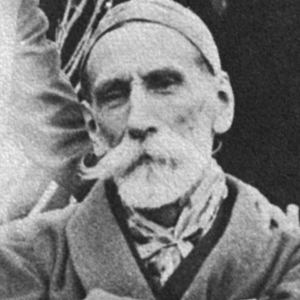
Oswald Wirth (1860–1943) was a Swiss occultist, artist and author. His father was anti-clerical and politically active, while his mother was a devout Catholic. This dual influence gave Wirth a lifelong interest in spirituality and symbolism.
He studied art and drawing from his father, which later shaped his Tarot and Masonic illustrations. He studied Esotericism and Symbolism with Stanislaus de Guaita, and created a set of Tarot trumps based on the Marseilles deck. His interests also included Freemasonry and Astrology.
Wirth was initiated into Freemasonry in France and quickly became known for his symbolic interpretations of Masonic ritual. He authored three volumes explaining the first three degrees of Freemasonry, which remain influential in Masonic literature.
His writings emphasized the symbolic and initiatory aspects of Masonry, connecting them to astrology, alchemy, and esotericism.
He was also linked to Co-Masonry (mixed-gender Freemasonry), an unusual path at the time, showing his openness to broader interpretations of the Craft.
Wirth is the artist responsible for the so-called Baphomet or Leviathan design of a goat head inside a pentagram that was modified for use as the logo for Anton LaVey’s Church of Satan. Wirth was not a Satanist; LaVey appropriated the illustration from a French encyclopedia of occultism by Maurice Bessey that reprinted Wirth’s drawing as an interior illustration and also used it as a stamped device on the cover.
Oswald Wirth, towards the end of his life, in a wheel chair.
Joseph Paul Oswald Wirth was born on August 5, 1860, around 9 hours of the morning, in Brienz, small Suisse village of 2500 inhabitants bordering the lake of the same name. Of three brothers, two died in low age, and Edward, officer of Zouaves, perish with the field of honor in 1894. A sister, Elects, born in 1875, was the partner of Oswald of her youth until her death.
He said all humbly to have in Stanislas de Guaita, met for the first time in spring 1887, and which did it its secretary and friend.
(…) the entry in relation to Stanislas de Guaita became for me a capital event. It made ego his friend, his secretary, and his collaborator. Its library was at my disposal, and, profiting from its conversation, I have in him professor de Qabalah, of high metaphysics, as much as French language. Guaita took the trouble to form me the style, to trim me literarily (…) I him must write lisiblement. (Dedication with the Tarot of the imagiers of the Middle Ages).
Oswald Wirth drawing the charcoal
Even if one can easily agree that Guaita could teach art to him to turn its sentences fortunately, in our language which the foreigners regard as so difficult – Oswald Wirth was originating in allemanic Switzerland -, it is undeniable that the disciple thereafter equalized, if not exceeded the Master, at least in the field of symbolism; one indeed owes him a certain number of works which became the traditional ones: Hermetic symbolism in its relationship with alchemy and Freemasonry, astrological symbolism, and especially the Tarot of the imagiers of the Middle Ages in which it resumes the study symbolic system of the major blades that it had drawn for Guaita.
Generally, and contrary to that which he regarded as his Master, it more was interested in Freemasonry in the Rosicrucian brotherhood; Mysteries of the royal art, and Freemasonry made understandable with its followers give an account of it brilliantly.
Oswald Wirth died on March 9, 1943 at 11 a.m. It is buried with the cemetery of Monterre-on-Blourde, in the south of Poitiers (86).
Oswald Wirth major works:
* The Tarot of the imagiers of the Middle Ages.
* Hermetic symbolism in its relationship with Alchemy and Freemasonry.
* Astrological symbolism.
* Mysteries of the Royal Art.
* The laying on of hands and philosopher medicine.
* Freemasonry made understandable with its followers.